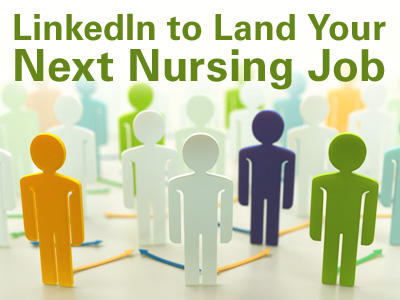Featured
Tags
Share

This is the second part in a three-part series on how nurses can leverage LinkedIn, the world's largest professional networking website.
Now that you have discovered more about LinkedIn from Part I of our series, let's start talking more about building your profile and online network.
Building your profile
First and foremost, you need a robust personal profile with a professional photo of yourself – and only you. You'll want to develop a keyword-rich summary and include a few accomplishments. Make your summary direct and tell people what you do professionally.
Start to build your profile with your education, volunteer and professional activities. Make it comprehensive and use experiences that are relevant to your targeted job. Make use of action verbs that are common to the nursing industry such as delegate, precept, direct, manage, provide, administer, report, educate, contribute and communicate. Be sure to provide a clear picture of your capabilities and skills to assist recruiters in finding you in a sea of candidates.
If you need help getting started on a profile and understanding the right words to use that are relevant to nursing, search LinkedIn for nurse managers and nursing executives who have completed profiles to see how they are presenting themselves.
Making connections and joining groups
Once you have a basic profile and have proofread everything, it is time to grow your network. Start by connecting with your classmates, instructors, clinical managers, business associates, contacts from volunteer and other experiences, and others that you know in the industry. Be sure to include a short, grammatically-correct note when you send your connection request and reference how you know each other if it has been a while since you last connected.
Then, begin using LinkedIn to continue to expand your network by joining groups. LinkedIn is a robust community of professionals that have groups for people in different specialties that are run by professionals in the field.
Want to find groups that may be relevant to nursing? Use the LinkedIn search tool on the site to search groups that have the title "Nurse" or "Nursing" in their name. Simply type the search criteria in, select that you want to search for groups and not individual people, and then see a listing of the most popular groups that relate. Try this with different specialties, hospital and facility names, and other topics that are relevant to nursing. You should definitely join the Chamberlain College of Nursing group as soon as possible.
As you interact and post in the different groups you join, you may run into others who may be good LinkedIn connections because they are in the field, facility or demographic area in which you'd like to work. If you are interested in learning more about a connection or asking for advice, send a personalized communication to introduce yourself and briefly describe why you want to connect. Close the communication by asking them if it is okay to send an invitation to connect, which allows the connection to respond to your email and not commit to accepting the connection. More often than not, if you are brief and appropriate (and not outright asking for a job!), you will have a new connection who may be in a position to assist you.
Overall, once you are connected and have joined a few groups, you will start to see how others interact on LinkedIn. Don't be afraid to explore postings by others and ask for advice on how to best use this powerful networking tool. Soon, you'll be sharing information with your network and will be gaining valuable information on the industry, and perhaps future career opportunities!
View Part III of the LinkedIn to Land Your Next Nursing Job series
By Michelle Mercurio
More from Careers
Request More Information
To receive the Chamberlain University Program Guide, including associated career paths, please select a program of study.






